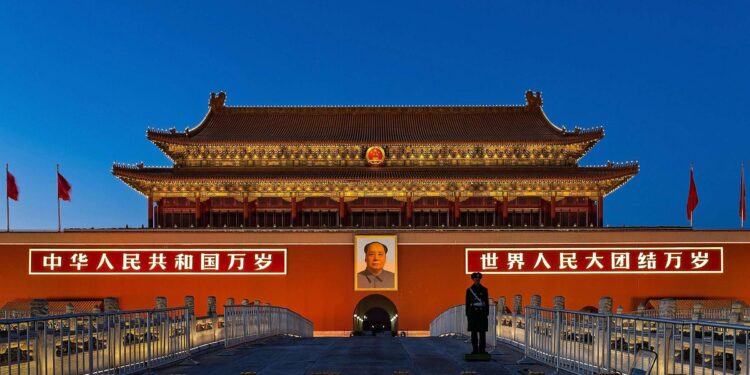China and Brazil Forge Stronger Alliance for a Multipolar World
In a pivotal diplomatic development, China and Brazil have solidified their partnership in response to the ongoing trade disruptions caused by recent U.S. tariff policies. This renewed alliance was prominently featured during high-level talks between the two nations’ leaders, who underscored their mutual goals of fostering stability and diversity within global economic frameworks. As the United States continues to adopt inward-looking trade strategies, this collaboration between two significant emerging markets represents a strategic shift towards cooperative efforts on various fronts, including trade relations and environmental policies. This article explores the ramifications of the China-Brazil partnership, shedding light on how it mirrors evolving global power dynamics and contributes to a more equitable world order.
Strengthening Bilateral Relations for Global Multipolarity
China and Brazil are actively enhancing their cooperation to promote a multipolar international system as geopolitical tensions rise due to unilateral actions like those seen in U.S. tariff implementations. Both countries emphasize sovereignty, economic autonomy, and establishing an inclusive governance model that honors diverse political ideologies and economic practices. Their discussions have centered around developing frameworks that encourage mutual investments, technological exchanges, and infrastructure projects aimed at bolstering their influence in global forums.
The nations have identified several key areas essential for advancing their collaborative efforts:
- Trade Enhancement: Strengthening trade ties while minimizing reliance on Western economies.
- Infrastructure Investment: Collaborative initiatives designed to improve connectivity and stimulate economic growth.
- Technological Synergy: Joint ventures focusing on innovations across sectors such as renewable energy solutions and agricultural advancements.
A recent meeting resulted in officials outlining a strategic framework through an organized table format:
| Main Focus Area | Aim | Pursued Outcome | |
|---|---|---|---|
| Bilateral Trade | Aim for increased trading volume between both countries | An anticipated 15% growth by 2025 | |
| Investment Initiatives | Create joint ventures across critical industries | Sustained economic resilience |
This alliance signifies both nations’ dedication to cultivating an environment where equality among states is prioritized while resisting neo-imperial tendencies—serving as an exemplar for other countries navigating today’s intricate geopolitical landscape.
Strategies to Counteract Trade Tariffs Impacting Emerging Economies
The repercussions of U.S.-imposed tariffs continue affecting global markets significantly—especially emerging economies like China and Brazil—which are now seeking collaborative methods to protect their financial interests. One effective approach involves strengthening bilateral agreements that stabilize these nations’ economic interactions against tariff-induced volatility. Potential initiatives include:
- Tightening Trade Agreements: Enhancing existing pacts can facilitate exports without incurring additional tariffs.
- Cultivating Technological Exchange: Promoting technology transfer can help develop local industries less reliant on affected markets.
- Diversifying Investments: Encouraging reciprocal investments can spur growth while broadening trading avenues.
Additionally, creating a multilateral framework dedicated to resolving trade disputes could benefit emerging markets significantly. By uniting under organizations such as BRICS or the Shanghai Cooperation Organization (SCO), China and Brazil can amplify their collective voice advocating fair trading practices globally. Establishing dedicated funds could also support sectors adversely impacted by tariffs through measures such as:
| >Economic Support Initiatives<< / th >> << th >>Description<< / th >> << / tr >> << / thead >> << tbody >> << tr >> << td > >< strong >Tariff Relief Programs< / strong >< td > Direct subsidies or tax relief targeting sectors hit hard by tariffs. << tr >< td >< strong >Access To Credit< / strong >< td > Low-interest loans available for businesses facing financial challenges. <<
tr >> Funding opportunities enabling businesses exploration into new international territories. <
p >By implementing these strategies effectively, Recommendations For Collaborative Initiatives To Enhance Trade And Investment Between China And Brazil <
p In light of shifting trade landscapes alongside evolving global policy directions,
both China & Brazil must prioritize stronger collaborative initiatives aimed at boosting bilateral commerce & investment.
The following strategies should be emphasized:
<
ul > << li >< strong >Investment Incentives:< / li >> Crafting bilateral investment agreements offering tax benefits encouraging businesses investing within each other’s market. << li >< strong >Trade Agreements:< / li >> Revisiting existing agreements expanding product/service coverage reducing barriers/tariffs. <<
li >< strong>Cultural Exchange Programs:> Facilitating educational/cultural exchanges fostering understanding/trust leading smoother business interactions. <
p Furthermore,
establishing bilateral forums assessing/improving commercial relations regularly would be beneficial;
serving platforms where:
<
table class = "wp-block-table" > head body <>Encourage SME Participation<>Increase engagement from small/medium enterprises<> <>Innovation Collaborations<>Foster joint ventures technology/research<> <>Environmental Sustainability Initiatives<>Promote green practices among partners<> body table h2 id = “conclusion” Closing Thoughts The recent agreement forged between China & Brazil aiming at upholding multipolarity arrives during crucial times marked with persistent tensions surrounding tariffs particularly under Trump’s administration; |
|---|































